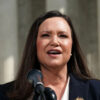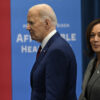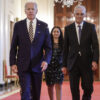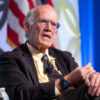In a terrific decision this morning that will no doubt cause The New York Times to go into the same type of hysterics it exhibited after the Citizens United decision, the Supreme Court of the United States ruled against the Federal Election Commission. Today’s decision in FEC v. McCutcheon restores Americans’ First Amendment rights to participate in the electoral process, as the Court threw out the aggregate limits on political contributions imposed by the Federal Election Campaign Act (FECA).
In addition to the base limits that restrict how much money a donor may contribute to a particular candidate or political committee, FECA limits the total amount a donor can contribute to all candidates and committees. Currently, the maximum individual donation that can be given to a federal candidate is $2,600 per election—that limit was not at issue in this case. Rather, McCutcheon addressed the aggregate limit on the total amount of contributions that an individual can give to all candidates in the two-year federal election cycle, which is $48,600.
In the 2011–2012 election cycle, Sean McCutcheon, a general contractor in Alabama who runs his own business, contributed to 16 different candidates, each within the base limit. McCutcheon is a conservative who wants to help candidates and organizations that share his convictions about the Constitution and the limits it imposes on the power of the federal government. He wanted to donate to more candidates who shared his political views, but the aggregate limit prevented him from doing so.
In an opinion written by Chief Justice John Roberts that was joined by Justices Antonin Scalia, Samuel Alito, and Anthony Kennedy, a plurality of the Court recognized that contributing money to a candidate is an exercise of an individual’s right to participate in the electoral process through both political expression and political association. Clearly, a restriction on how many candidates and committees an individual can help limits his First Amendment right to support those who share his ideological views.
As Roberts said, “money in politics may at times seem repugnant to some, but so too does much of what the First Amendment vigorously protects.” According to the plurality, “if the First Amendment protects flag burning, funeral protests, and Nazi parades—despite the profound offense such spectacles cause—it surely protects political campaign speech despite popular opposition.”
The aggregate limits are unconstitutional because “the government may no more restrict how many candidates or causes a donor may support than it may tell a newspaper how many candidates it may endorse.” The Court held that to require one person to contribute at lower levels because he wants to support more candidates or causes is to penalize him for robustly exercising his First Amendment rights.
The Court also concluded that the government’s claim that getting rid of the aggregate limits would lead to circumvention of the base limits on contributions was “far too speculative,” and that the scenarios offered by the government were either implausible or already illegal under current campaign finance laws.
Justice Clarence Thomas wrote a concurring opinion agreeing that the aggregate limits are unconstitutional, although he would have gone even further and held the base limits unconstitutional as well. Unsurprisingly, the liberal justices on the Court—for whom no campaign finance restriction goes too far—disagreed. In a dissenting opinion joined by Justices Ruth Bader Ginsburg, Elena Kagan, and Sonia Sotomayor, Justice Stephen Breyer claimed that the ruling would “eviscerate” the “Nation’s campaign finance laws.”
Given the damaging impact that federal campaign finance laws have had on our electoral process one might even wish that Breyer’s hyperbolic claim were true—given the non-competitiveness of congressional races, as well as the restrictions these laws have imposed on our First Amendment rights.





























